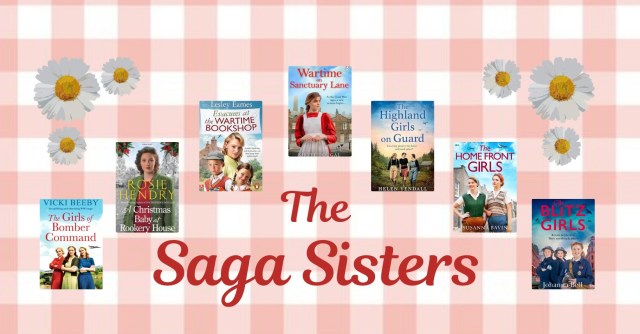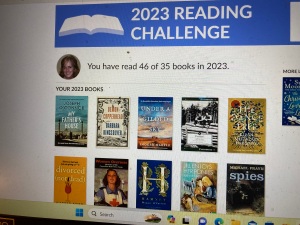So, the first draft of book #4 has gone off to the editor and I now have a couple of weeks of ‘freedom’ before it comes winging back and the work has to start again.
I know, for example, that I need to write at least another 20k because the draft I sent was only 77k and my books are usually around the 96k mark.
And of course, some stuff might get ‘shelved’ (a nice way of saying ‘taken out’!) so there might be more than 20k in the end.
Since last Wednesday morning when I pressed ‘send’ (only half a day late, a record for me), I have been running around like a loonie, trying to fit in all the activities and fun stuff that I haven’t had time to do.
Netflix
For example, we have now got Netflix (this will please all my friends and family who’ve expressed complete and utter disbelief in the past, when I’ve said we don’t have it. BUT, note to them: this is only for a short time!) and I’m planning to immerse myself in Scoop, One Day and Baby Reindeer. If you have other recommendations, please leave them in the comments!
Stratford on Avon Literary Festival
And I have been to Stratford-on-Avon no less than 5 times in the last 5 days (a one-hour round trip for me, but still utter madness!).
It was the literary festival last week and on Monday night, two days before the first of the 70 events were due to begin, disaster struck: the main venue for the Festival, the Crown Plaza Hotel, had a massive fire! (9 fire engines-worth). Luckily, no one was hurt but it meant they had to find new venues for the events within about 12 hours (and amazingly they did it!).
On Wednesday night, I took part in the Festival’s ‘Local Author Showcase’ which was.. scary! And interesting…!
In a nutshell, each participant had two minutes to stand in front of the audience and pitch their book. And what a varied bunch they were (the books, I mean): a memoir by a former (female) prison governor; an African futuristic fantasy novel; a dystopian science fiction novel, a travel book about motor caravanning in the Cotswolds.. and that’s just for starters!
If you went over the 2 minutes (I did!), someone blew a hunting horn and you had to leave the stage Without Saying Another Word!
It was fun, actually and here I am with one of the other writers (Seymour, author of the dystopian science fiction novel), who had come in character, as you can see. He was actually a very friendly chap but before the event started he stood outside and glared at us all through the window, which was a bit disconcerting!
I then whizzed around for the next few days, seeing some of my favourite authors: John Boyne, David Nicholls and Jojo Moyes.
Sadly, I have NO photos of me with these author-celebs, because, unlike other events I’ve been to in recent times, it was all a bit ‘production-line’ at the end and there wasn’t much time to chat or have one’s picture taken (or tell John Boyne that his book ‘The Heart’s Invisible Furies’ is one of the best books I’ve ever read). It was just a quick hello and a few words, the books were signed and they were onto the next person.
But, that aside, everyone I saw was very good and inspiring!
I loved the fact that David Nicholls said his first draft takes a year to write, then it goes off to his editor for structural edits (which is the stage I’m at) and when it comes back, he might have been advised/asked to ‘change the ending’ for example. See, even the brilliant writers get edited!
He also said, that once he starts work on the second draft he completely rewrites the whole novel – ie: he doesn’t just incorporate the suggested changes, he starts again! Wow! Maybe I should.. ? No, if I try doing that it’ll take me another six months!
Evesham Festival of Words – Writing Workshops
And still on the subject of Festivals, just a quick plug for a couple of writing workshops coming up in the summer, at the Evesham Festival of Words, which, if you live in or around the Midlands, might be of interest:
Saturday 29th June – ‘Flash Fantastic’ 10.30am – 12.30pm with EL Rhodes (£18)
(I am going to this so if you’re there too, do say hello!)
Flash Fantastic – big stories in a few words, an introduction to flash fiction, or writing the shortest of short stories. The flash form for both fiction and non-fiction is a vibrant way of telling the shortest of stories. Whether you’re an experienced writer, or new to the short, short story, or to writing, this workshop will cover the basics of flash and look at some tricks and tips for putting the shine on stories from between 6 and 1,000 words.
Electra Rhodes ran a workshop at the Festival last year and she was great. She knows her stuff. She’s won loads of writing competitions! Oh, and there will be cake! What’s not to like?
Sunday 30th June, ‘So You Think You’ve Got A Book In You?’ 10.30 am – 12.30pm with novelist Debbie Young (£18)
Ever dreamed of writing a book? Think you’ve got a book inside you, but not sure where to start? Author Debbie Young‘s workshop will help you define your book idea and turn your idea into reality, whatever your chosen genre – novels, short stories, poetry, non-fiction, memoir, local history, and more. The session will include helpful case studies, constructive exercises, top tips for writing well and consistently, an overview of publishing opportunities in the UK today, and the best route to publication for your project.
(I’m not going to this one, only because I would feel a slight fraud, as I’m on book #4 but it sounds great if you’re starting out, are writing your first novel or just need a little kick in the butt to get going!)
If you fancy booking either – or both – of these workshops, you can do so by PayPal, BACs or cheque. All the details are here.
Between The Covers Goes Live
And finally, still on the subject of TV and books and just in case you hadn’t seen this in the news, ‘Between The Covers’ the BBC2 book programme is ‘going live’! All the details are here.



























